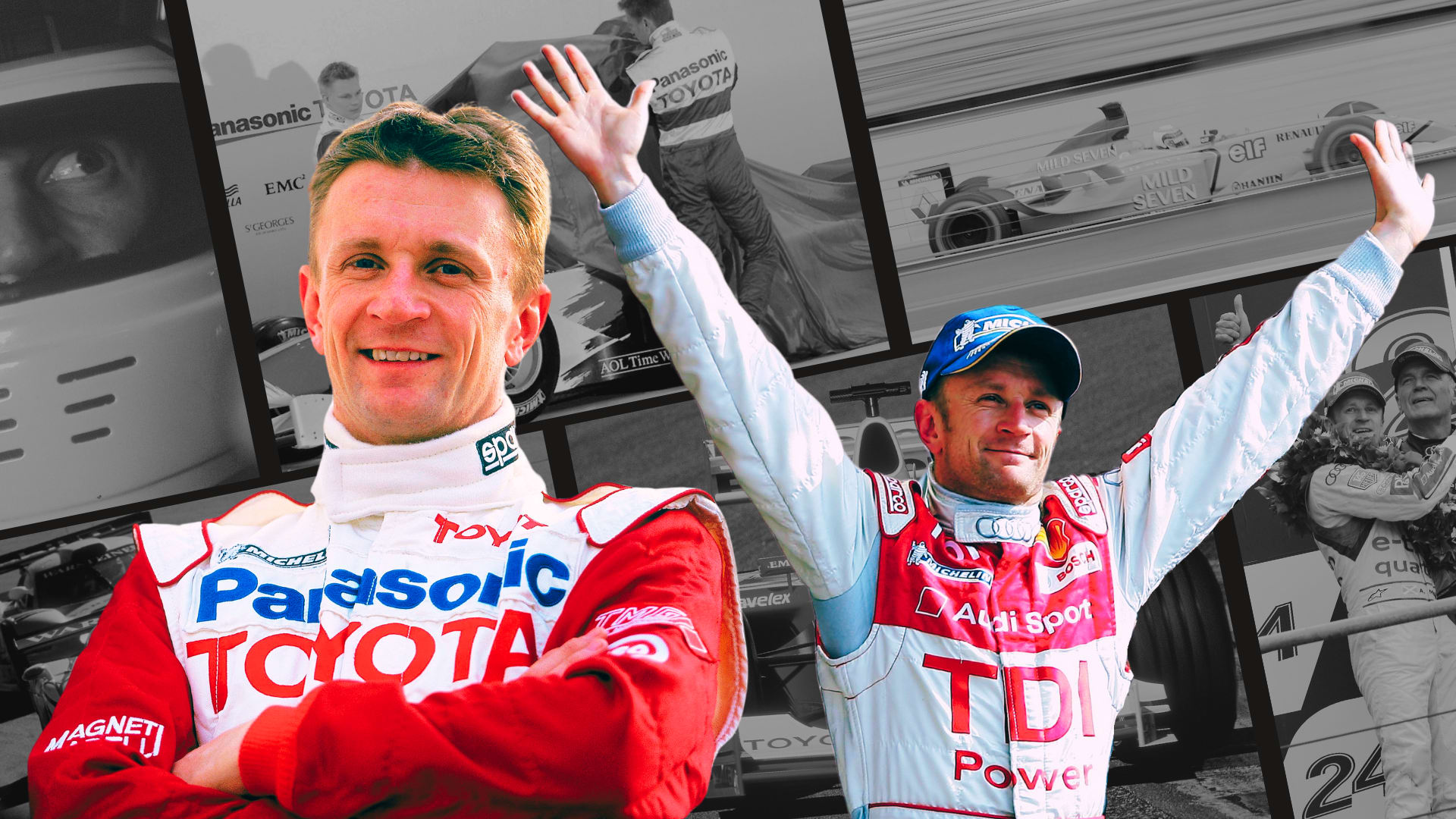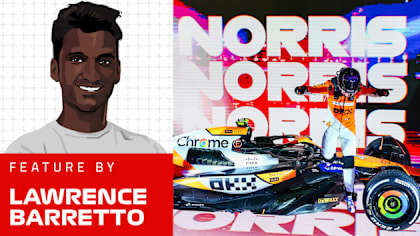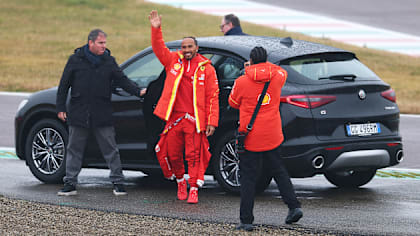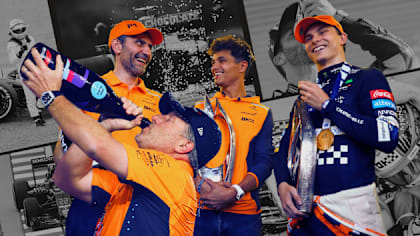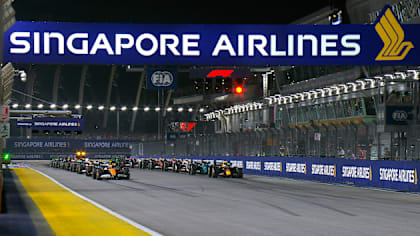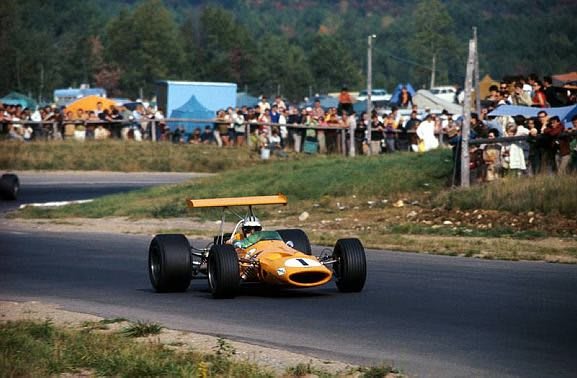
Feature
GALLERY: Back to their roots? How orange fits into McLaren's history
Share

After weeks of speculation and teasing, McLaren have finally revealed that their 2017 car will indeed be orange - a colour the team haven’t raced with since 1971. In fact, despite its iconic status, the eye-catching hue was only used for a very short period in McLaren’s history - and it certainly wasn’t Bruce’s team’s original livery colour…
Green shoots
)
Eschewing the traditional idea of competing in national colours, Bruce McLaren's eponymous team made their Formula One debut at Monaco in 1966 using a white colour scheme with a central green stripe. This enabled the New Zealander to double as Pete Aron, the lead character from John Frankenheimer’s ‘Grand Prix’ movie, which was filmed throughout the summer of '66. The convention would have been to paint the M2B in New Zealand's nominal racing colours of green, black and silver.
One-off-red
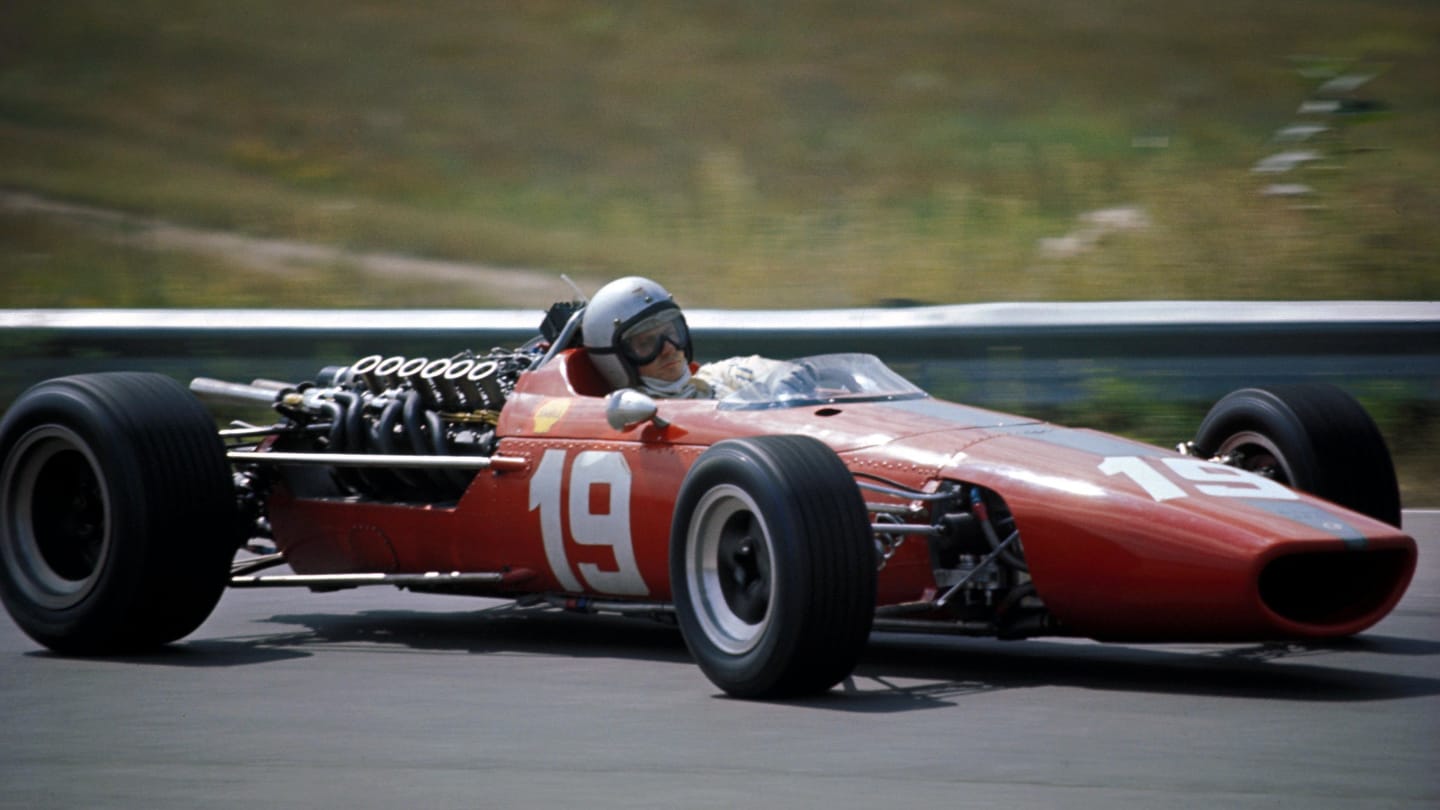
A year later and McLaren switched to a one-off colour scheme of red with a pale central stripe for Canada's inaugural Formula One Grand Prix. Bruce qualified sixth in the Ferrari-esque car and was in the mix for victory at quarter distance, only to fall back as a wet track gradually dried.
Orange is born
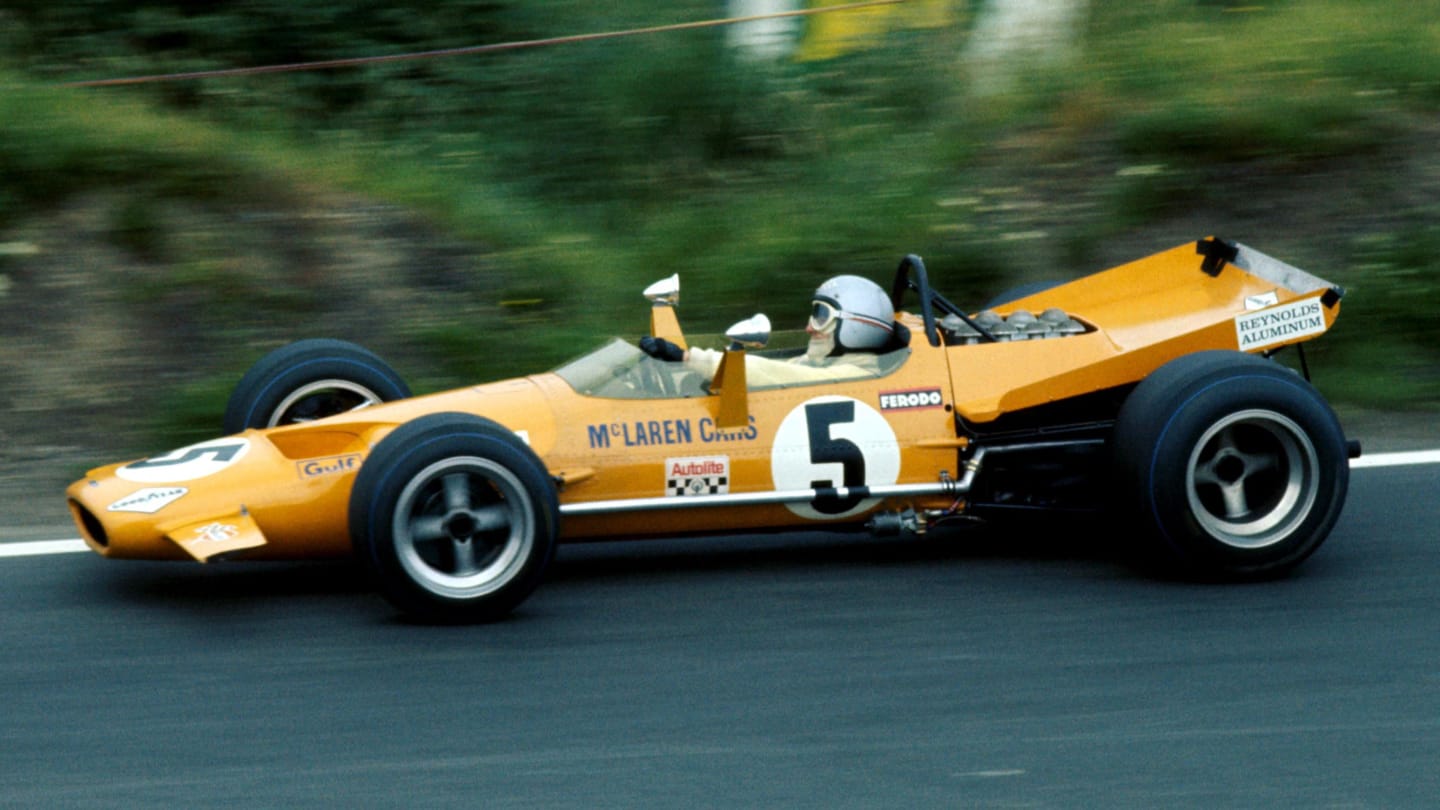
Inspired by rival liveries in Can-Am sports cars, and keen to stand out from the pack, McLaren made the historic decision to switch to orange. The team's F1 cars sported the striking colour scheme in 1968, when they also became a winning force, triumphing at Spa-Francorchamps, Monza and Mont-Tremblant. While the livery was in fact short-lived, staying only until 1971, it continues to be synonymous with the Woking team, as well as a firm favourite with fans.
Reverting to white
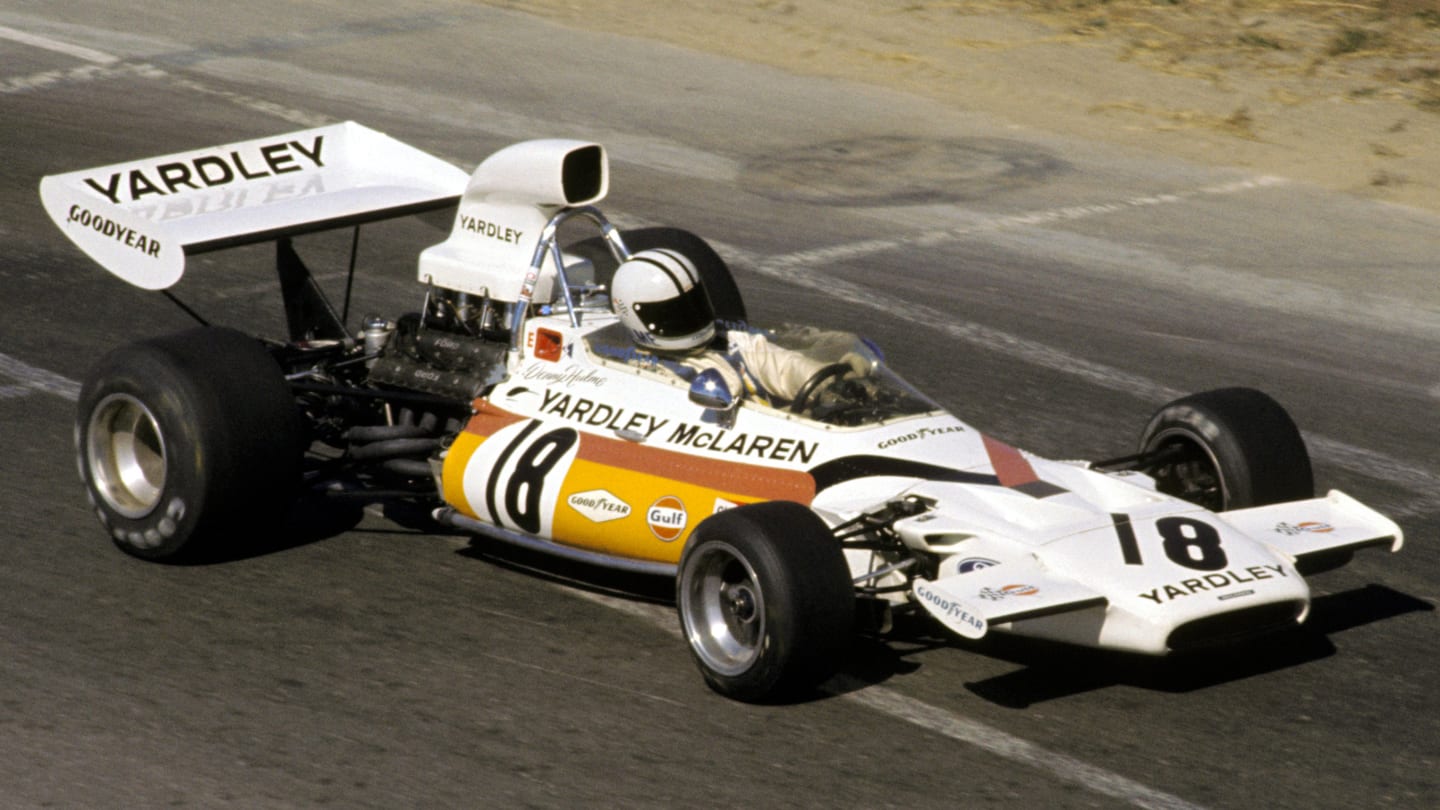
The arrival of Yardley as sponsors led to another change of livery for McLaren in 1972. Though they didn't totally dispense with the papaya orange, keeping a small strip on the sidepods, the car was once again predominantly white - a combination the team kept, with minor modifications, for the following season.
The might of red and white

Emerson Fittipaldi's arrival at McLaren in 1974 signalled a major change of direction in terms of livery, as sponsorship deals sparked the iconic red and white blend that would adorn the team's cars for the next two decades. The period would also coincide with some of McLaren's most successful and iconic years, including, of course, the Ayrton Senna-Alain Prost duels that came to define an entire F1 era.
The portugese exception
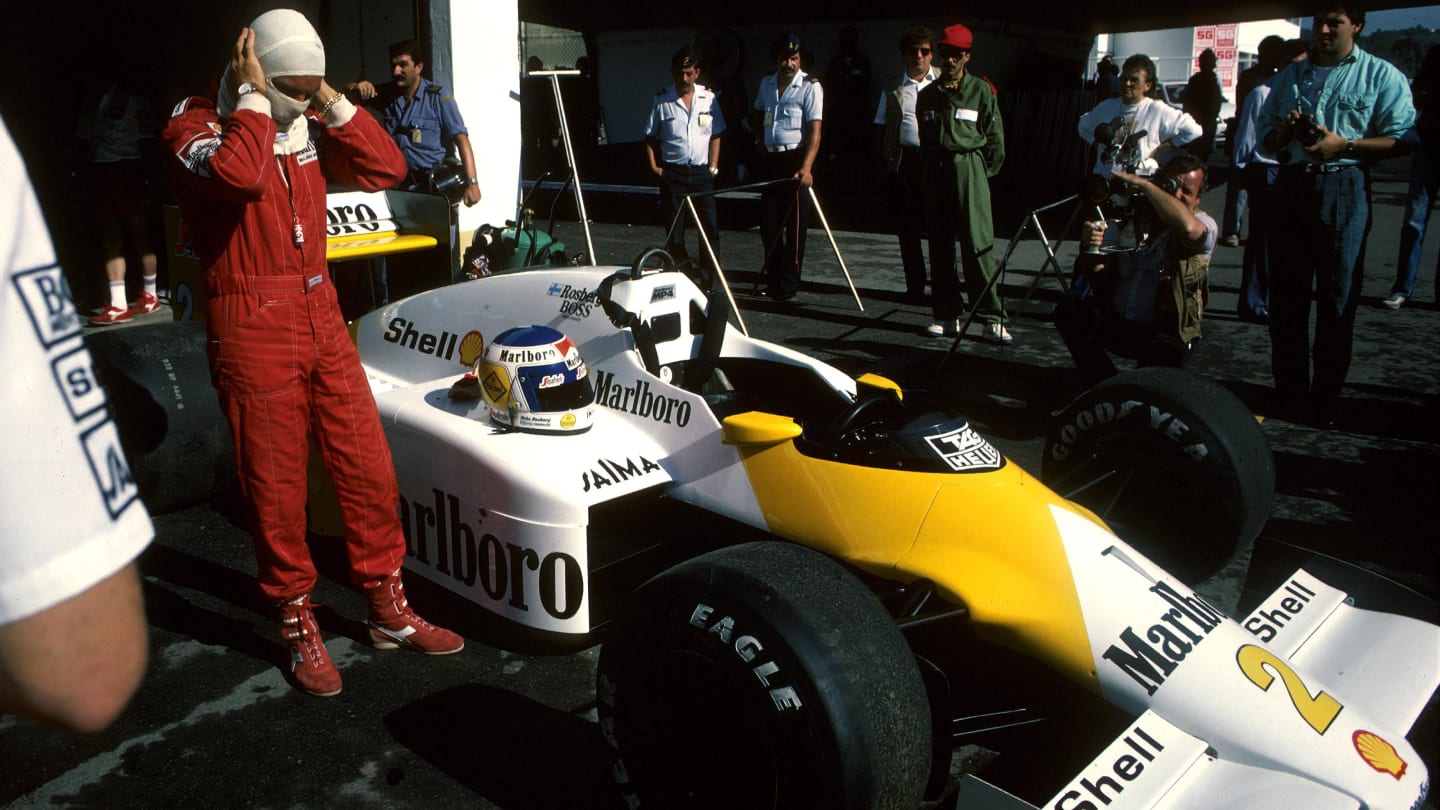
A visit to Estoril in 1986 threw up a rare break from red and white, as McLaren adopted a yellow hue in a one-off livery for Keke Rosberg. The Finn qualified seventh but retired just after the half-way point. Team mate Alain Prost, running in the more traditional colours, started third and finished second to stay in contention for the drivers' crown.
The swansong

The 1996 season would be McLaren's last in red and white, ending a two decade-long association with the scheme. Mika Hakkinen and David Coulthard scored a collective six podiums over the 16 races, although victory eluded both men.
Orange Interlude
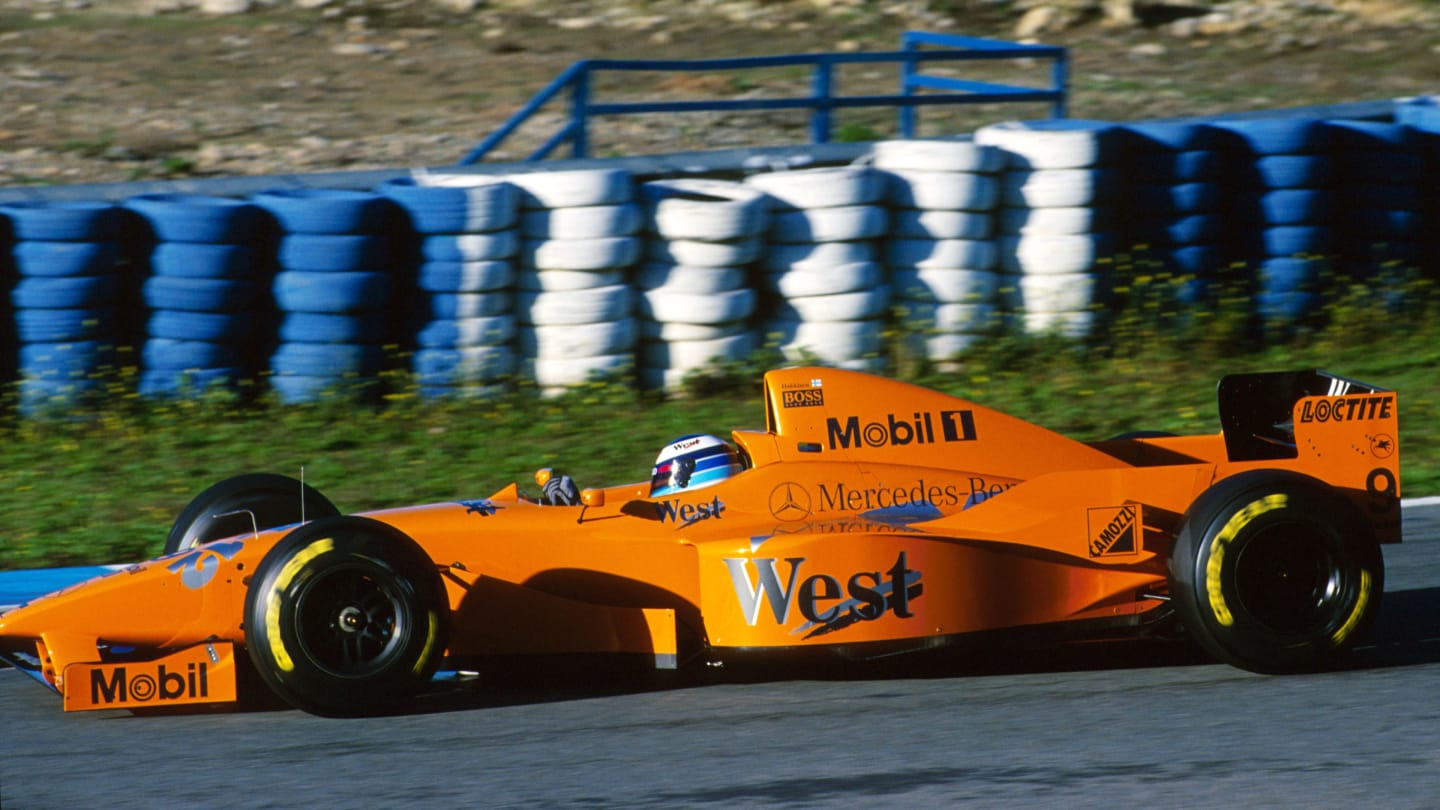
A brand-new full-time livery was in the works for '97, but before that was introduced, McLaren gave a nod to their heritage by testing in a bright orange car. Unsurprisingly the paint job attracted plenty of attention, and the team repeated the trick again in 2006.
Silver linings
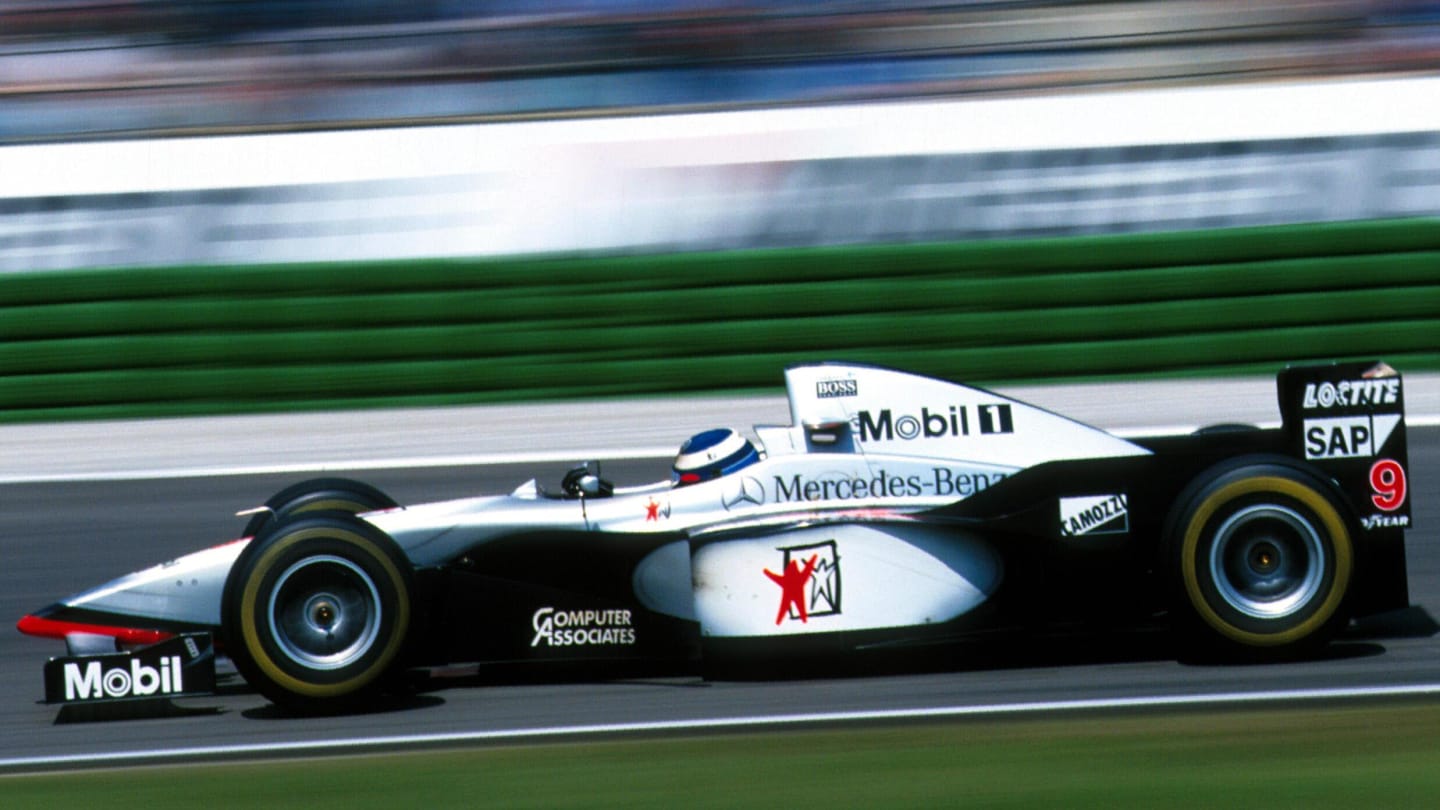
The arrival of new sponsors sparked massive changes in 1997, with the team adopting a silver and black livery - complete with a strip of dayglo red on the underside of the nose. Coulthard won in the MP4-12's first race in Melbourne, but slim pickings thereafter meant he and Hakkinen prevailed just once more each over the season. Though the colour scheme would be tweaked over the following seasons, it would essentially remain in place until 2015.
The chrome effect

One of the more significant tweaks to the silver theme came in 2006, when McLaren ushered in a revolutionary new chrome livery complete with dayglo stripes running from the front nose to the rear of the car, and also along the top of the engine cover. The team would amend the design further over the following seasons.
A temporary solution
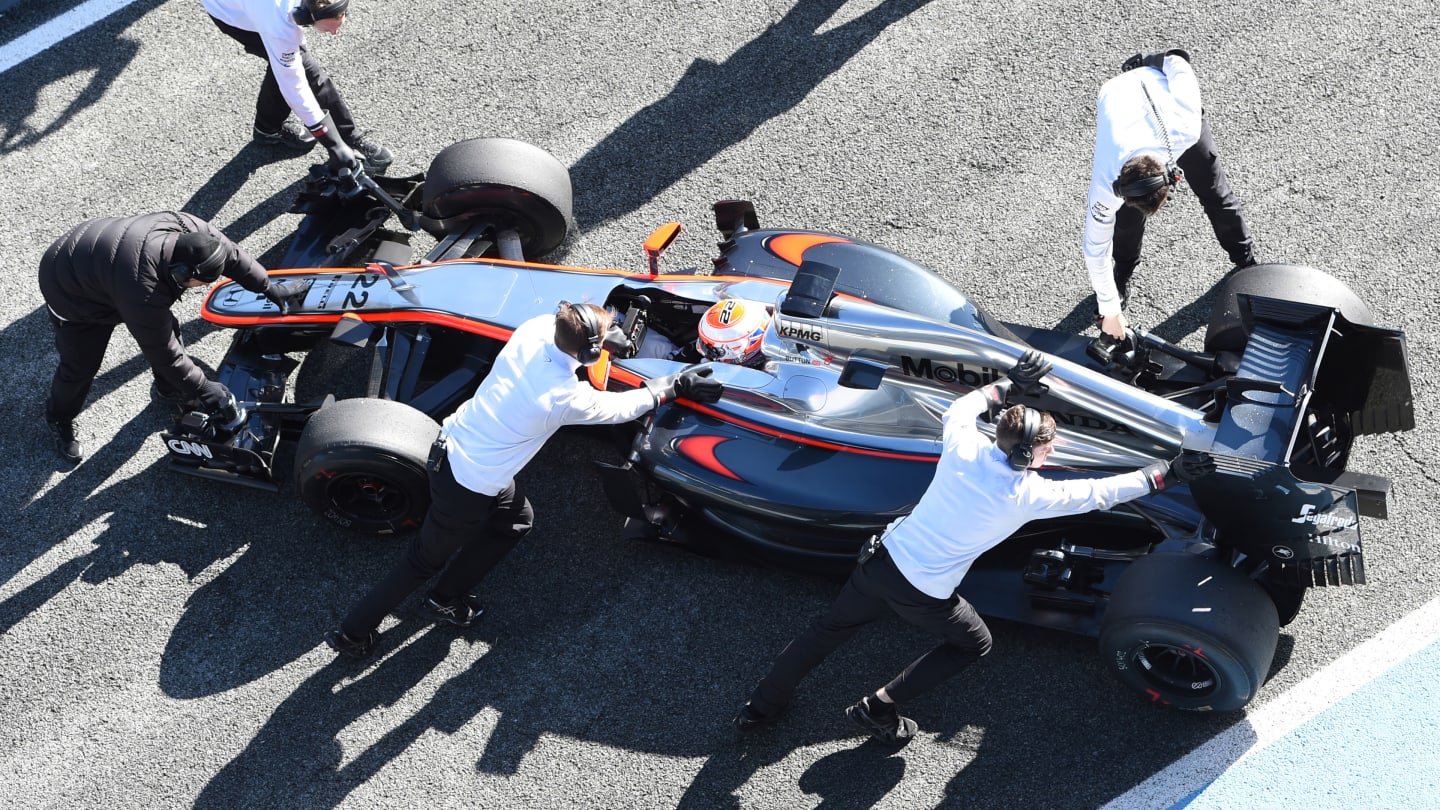
McLaren began the 2015 campaign with chrome still adorning the top of the MP4-30's nose and the sides of the engine cover - but the sidepods were a much darker grey, enlivened only by a dayglo stripe running around the midriff. However, the livery - which Ron Dennis had warned could change - lasted just four races...
Predatory grey
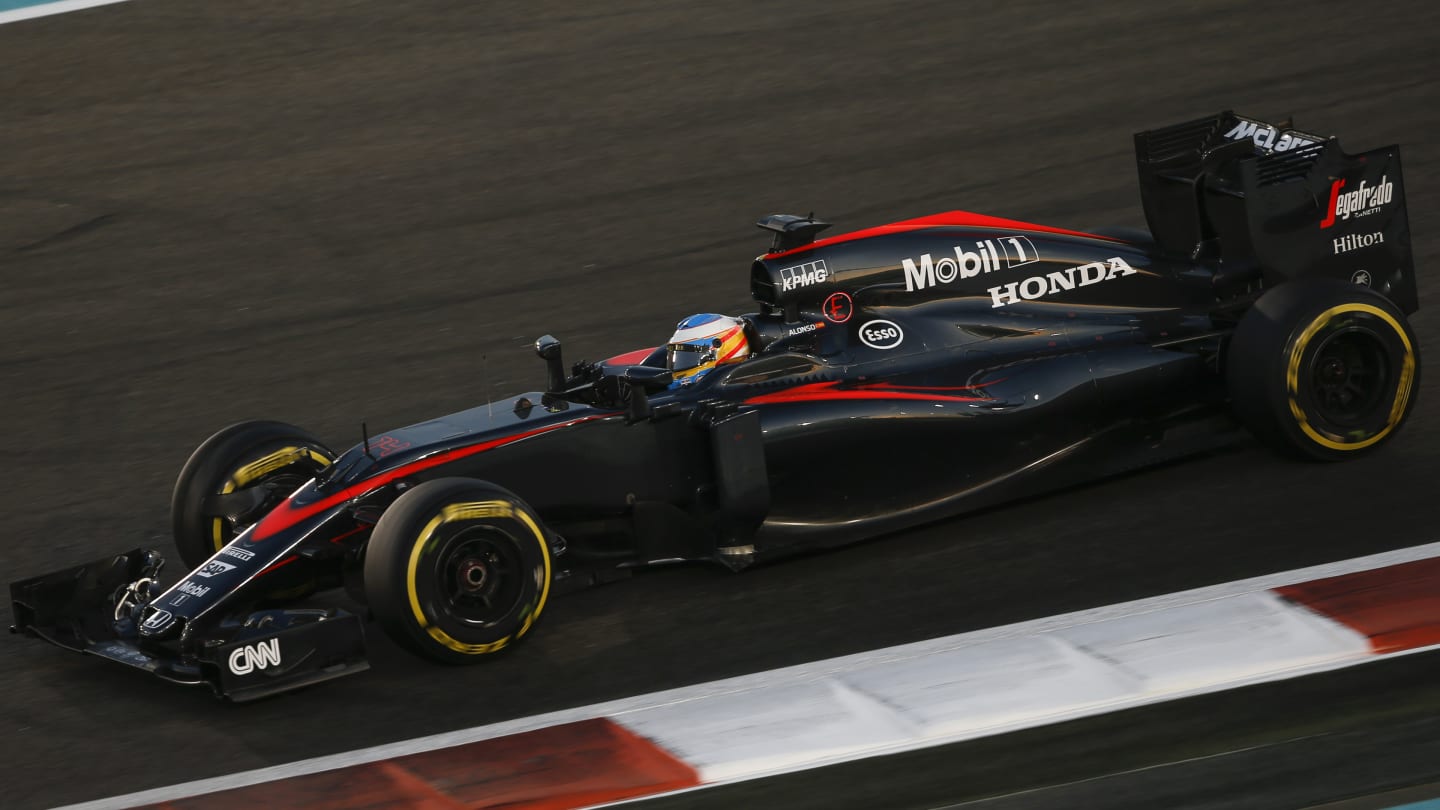
Five races into 2015, McLaren unveiled their first fundamental livery change since 1997 as they dropped any hint of silver and instead opted for a darker 'graphite-grey' colouration, with more emphasis on the dayglo keylines.
Back to the future
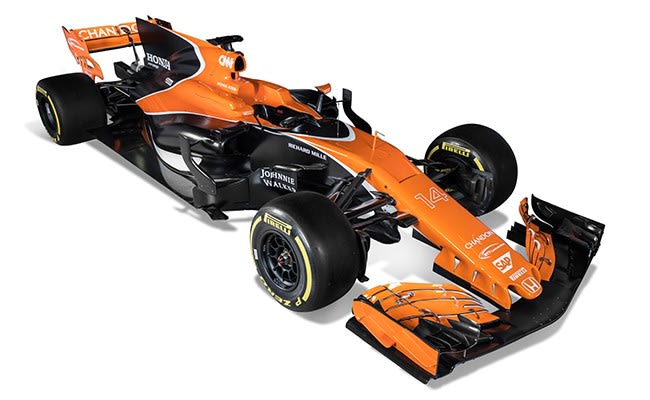
McLaren say the livery on their 2017 challenger, the MCL32, “blends old-school McLaren history with contemporary thinking on vehicle livery design”. The question is, will the new car become a regular frontrunner - and even a race winner - like the team's orange-accented cars of the past?
All images © Sutton Motorsport Images, LAT Photographic & McLaren
YOU MIGHT ALSO LIKE
FeatureF1 Unlocked BARRETTO: Norris promised McLaren that 2025 would be his year, so is he ready to become World Champion?
Image Gallery GALLERY: Hamilton pictured driving a Ferrari F1 car for the first time at Fiorano
Feature TIMELINE: From a ‘GP2 engine’ to World Champions – recounting McLaren’s scarcely believable F1 turnaround
News Formula 1 and Singapore Airlines renew Singapore Grand Prix title sponsorship
